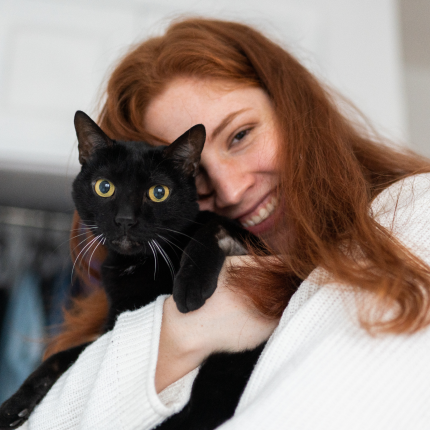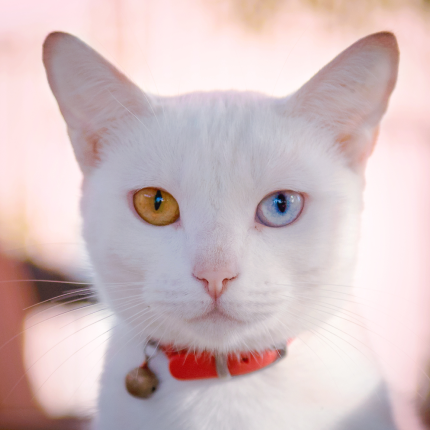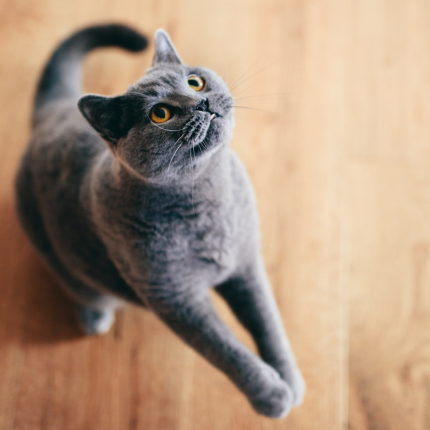National Hug Your Cat Day: Understanding Cats and Hugging

In celebration of National Hug Your Cat Day, it’s important to delve into whether or not hugging your cat is genuinely a gesture they appreciate. While some cats may seem content with being hugged, others may react negatively, making understanding their preferences and boundaries crucial. So, should you hug your cat? Let’s explore this further.
Do Cats Like Hugs?
The truth is, many cats are not fond of being hugged. They value their independence and dislike feeling restrained, especially regarding firm or tight hugs. If you’ve witnessed a cat being hugged, you’ve likely seen signs of discomfort, such as squirming, meowing, panting, and sometimes scratching or biting. It’s important to remember that most cats view hugging as human-induced torture rather than an enjoyable experience.
However, there are exceptions, as some cats seem to enjoy or tolerate hugs. The key lies in understanding the factors that contribute to their preferences.
Early Introduction to Hugging
Kittens regularly exposed to hugging from a young age may grow accustomed to it and develop a higher tolerance for physical contact. If you have a kitten and introduce gentle hugging in their early stages, they may become more receptive to it. However, monitoring their comfort levels is essential, and never force physical contact if they show signs of distress.
Temperament and Breed Differences
Certain cat breeds, such as Ragdolls, Scottish Folds, and Sphynxes, are known for their more laid-back and easygoing personalities. These breeds generally exhibit a higher likelihood of enjoying human contact and handling. However, it’s important to remember that individual cats within these breeds may still have unique preferences. Adopting a cat from a shelter, regardless of the breed, and building a strong bond through regular interaction can also lead to affectionate behavior.
Approach and Body Language
The way you approach your cat can significantly influence their response to hugging. Sudden, intrusive movements may startle or intimidate them, leading to a bad reaction. Instead, gradually approach with gentle face scratches or body rubs, allowing your cat to become more comfortable with physical contact over time. Pay attention to their body language; if they exhibit signs of discomfort or resistance, respecting their boundaries and avoiding hugging is crucial.
Understanding Your Cat’s Preferences
Cats have subtle ways of expressing their likes and dislikes, and it’s important to observe their body language to gauge their comfort level. For example, cats that enjoy hugging may lean into contact, purr, headbutt, and even drool as signs of contentment. On the other hand, cats that dislike hugs may display behaviors such as attempting to escape, pushing you away, laying their ears back, swishing their tail, growling, or even freezing with dilated eyes and a stressed expression. It’s crucial to be attentive to these signals and immediately release your cat if they show discomfort or resistance.
Alternative Ways to Show Affection
While hugging may not be the ideal way to express affection for every cat, there are numerous alternative ways to bond with and show love to your feline companion. Gentle scratches, grooming sessions with a cat brush, interactive playtime, and rewarding them with treats can all effectively build a strong connection. Discovering what your cat enjoys and respecting their boundaries will ensure your bonding time is enjoyable for both of you.
While some cats may tolerate or even enjoy hugs, it’s important to approach physical contact with respect for their preferences. Understanding their body language, providing positive experiences, and focusing on alternative ways to express affection will help nurture a loving and trusting relationship between you and your feline friend. Happy National Hug Your Cat Day!

Featured Articles

Polydactyl Cats: Just More Beans to Love
Polydactyl cats have become extremely popular in recent times. As a result, more and more people are interested in learning more about this six-toed cat and want to get one of their own. If you are a cat lover intrigued by polydactyl cats, you have come to the right place….

The Odd-Eyed Cat (AKA Heterochromia)
Cats are already beautiful and fascinating creatures, but people are bound to take notice when they have something as captivating as two different colored eyes. Odd-eyed cats always have one blue eye paired with either a green, yellow, or brown eye. This form of heterochromia occurs in other animals, including…

Greebles and Cats: The Origin and the Meaning
You may have seen an internet sensation concerning cats labeled “greebles.” Feel out of the loop? We’re here to help you. In 2019, Reddit user /user/literallyatree commented on a Reddit post about a cat that looks like it’s trying to slap a ghost. This user commented: “My family calls things…
